10 mysteries of space, has been solved recently
 Bashny.Net
Bashny.Net

The discoveries of astronomers, as a rule, lead to the emergence of a large number of questions we have no answers. However, over the past year, scientists were able to solve ten mysteries of space, which was playing mind for many years.
What is this strange object in the center of our galaxy?

For a long time astronomers were trying to figure out the nature of G2, an unexplained body in the center of our galaxy. At first they thought that G2 — a cloud of hydrogen that is moving toward the huge black hole at the center of our milky Way. But once in the gravitational field of a black hole, G2 has not behaved as a cloud of hydrogen. If it was a cloud, G2 would have exploded with a massive fireworks display, which has changed would be a black hole. Instead, G2 remained in orbit almost unchanged.
A team of astronomers from the University of California, finally solved the mystery using modern Observatory. The Keck in Hawaii. Thanks to adaptive optics, telescopes of the Observatory were able to compensate for the distortion of Earth's atmosphere, forming a clear view of the space near the black hole.
The astronomers learned that G2 is a giant star, surrounded by gas and dust, which likely was the result of the merger of a pair of binary stars. This fusion G2 led gravity black holes and, possibly, also formed a number of merged binary stars stars similar to G2, not far from the black hole. For million years the star will expand before I settled down eventually.
Expansion G2 is also called "spagettification", lengthening that occurs when a large object is close to the black hole.
What are the closest dwarf galaxies?
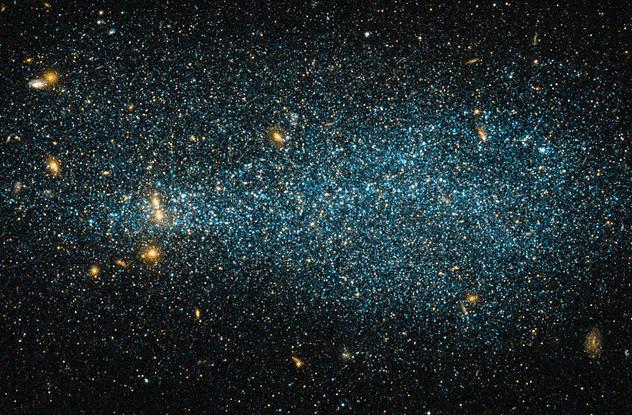
The milky Way is the largest galaxy in group of galaxies United by gravity. Our closest neighboring galaxies are known as dwarf spheroidal galaxies. Astronomers wondered whether the closest dwarf galaxies conditions for star formation that we see in dwarf irregular galaxies 1000 light years from the milky Way (and which are not associated with our galaxy's gravity). These distant dwarf galaxies contain a lot of neutral hydrogen that fuels the star formation.
Using sensitive radio telescopes, astronomers have discovered that dwarf galaxies, which rotate in certain limits around the milky Way, do not have hydrogen for the formation of stars. Blame the milky Way, but rather a halo of hot plasma of hydrogen surrounding our galaxy. When the next dwarf galaxies revolve around the milky Way, the pressure of the speed of their orbits cleans neutral hydrogen gas. Therefore, these galaxies can't form stars.
How much dark matter?
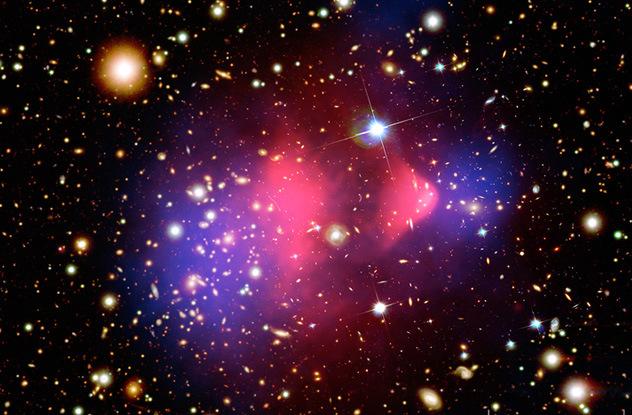
According to the model of the Lambda-CDM theory (the lambda cold dark matter), describing the formation of galaxies, we have to see with the naked eye, several large satellite galaxies around our milky Way galaxy. But we do not see.
Therefore, the astrophysicist Prajwal Kafle from the University of Western Australia decided to find out why, by measuring the amount of dark matter in the milky Way. "Stars, dust, you and I, everything we see is only 4% of the Universe, he said. About 25% is dark matter and the rest dark energy." Using the technique in 1915 (before was open dark matter), Kafle measured the amount of dark matter in our galaxy, studied in detail the speed of stars in the milky Way. He even looked at the edges of our galaxy.
The new measurement showed that in our galaxy 50% less dark energy than astronomers thought. Using new measurements of Caple, the theory of the Lambda-CDM has to predict that we should observe just three satellite galaxies around the milky Way. This is consistent with what astronomers see: the Small Magellanic Cloud, Large Magellanic Cloud, dwarf galaxy Sagittarius. Kafle solved the mystery that puzzled astronomers for 15 years.
The scientists also measured the speed needed to leave gravitational field of our galaxy 550 kilometers per second. It is 50 times more than necessary rocket to leave the Earth's surface.
What happens inside an exploding star?
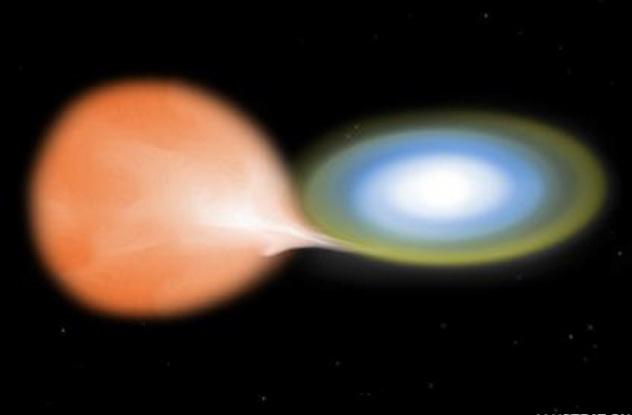
Using radiointerferometry (a combination of data from multiple telescopes to obtain a clear picture), astronomers in December 2013 were able to see how the star becomes new — the exploding star. This allowed to uncover the mystery of the creation of gamma rays, high-energy bursts of electromagnetic radiation. As explained by Tim O'brien from the University of Manchester, "new occurs when gas from the companion star falls onto the surface of a dying white dwarf in a binary system (a system of two stars that revolve around each other)".
This triggers a thermonuclear explosion on the surface of the star, who pours the gas into space at speeds of millions of kilometers per hour. "Sometimes new creates a new star, but the explosion is difficult to predict. The ejected material is moving outwards along the orbital plane of the stars. Some time later, even faster outer stream of particles of the white dwarf collides with the slow-moving matter. This leads to high-speed shock, which generates gamma rays.
Why on the opposite side of the moon is not "person"?
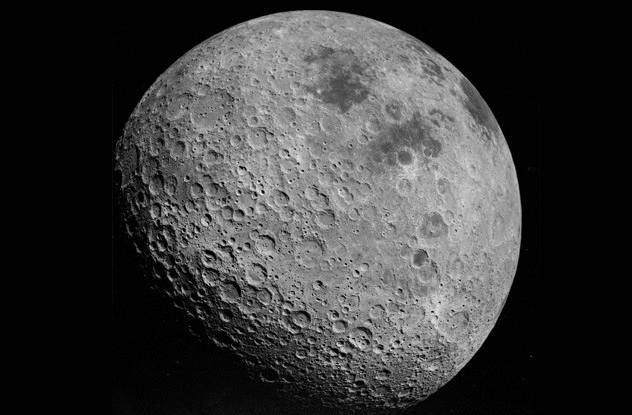
Since 1959, when the Soviet spacecraft "Luna-3" gives us our first look at the dark side of the moon, astronomers have puzzled over the following problem. No one can explain why the far side is so different from the side facing the Earth. The far side is a jumble of craters and mountains, but she has almost no seas (dark areas of flat seas of basalt) that we see from our point of view.
Thanks to the seas, it seems to us that the moon has a face. Penn State astrophysicists think they managed to solve the mystery. The lack of seas on the far side of the moon testifies to a thick cortex with large accumulations of aluminum and calcium. One theory suggests that an object the size of Mars once collided with Earth. Along with the outer layers of the Earth he was thrown into space and subsequently formed the moon.
But tidal lock between the earth and the Moon keeps one side of the moon always faces the Earth. In the early stages of formation of the satellite, this side stayed hot, while the far side is gradually cooled down. This led to the formation of a thick crust. Penn State astrophysicists believe that this thick bark prevent ingress of igneous basalt on the surface. It is also believed that meteoroid broke through the thin crust of the moon facing the Earth, and made out of basaltic lava, which formed the sea.
However, MIT scientists say that the new information received during the mission, the GRAIL, shows that the face of the man in the moon could not be formed due to asteroid strikes, and due to the accumulation of large amounts of magma inside the moon. But this theory is unlikely to be confirmed without direct visit to the moon.
That it glows in space?
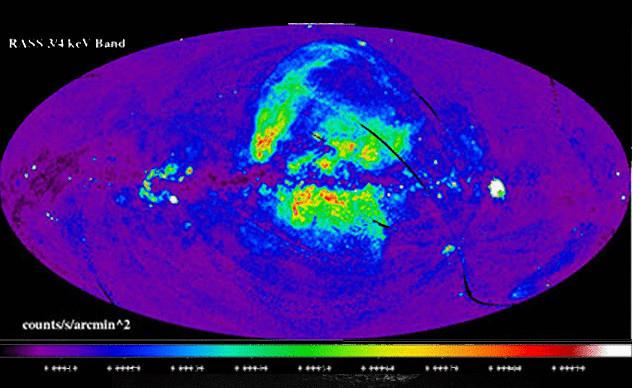
If you look at a clear sky at night, you will see a lot of stars. Using a small telescope you can also see the planets, nebulae and galaxies. But if you take the detector x-rays, you will see the x-ray glow in the sky, which is known as diffuse x-ray background. The source of the glow was a mystery for about 50 years. There are three options. It can be outside of our Solar system, it can be in the "local hot bubble" of gas or be in our system.
X-rays also emanate from the inside our Solar system when the solar wind emitted in the form of charged particles the Sun, collides with a neutral hydrogen and helium. Astronomers could not understand what kind of glow, while Massimiliano Galleazzi from the University of Miami is not summed up: "It's like traveling at night and see the light, not knowing it is born within 10 meters or 1,000 kilometers." Now we know it's a bit of a bit.
What is the distance to the "Seven sisters"?
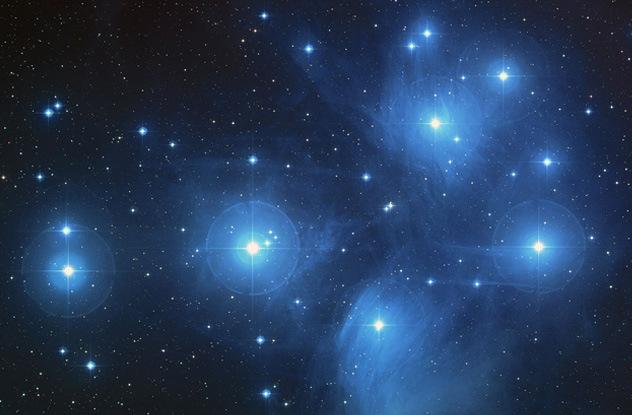
The Pleiades, also known as the "Seven sisters", is a well — known star cluster in the constellation Taurus. Astronomers consider it a cosmic laboratory of hundreds of young stars that formed about 100 million years ago. Scientists used Pleiades to understand how to create star clusters. Also it is a useful measuring tool to determine distances to other star clusters. Astronomers agreed that the Pleiades are in the range of 430 light-years from Earth.
But then Hipparcos, a European satellite that was supposed to more accurately measure the distance to thousands of stars, determined the distance to the Pleiades at 390 light years. "Perhaps, this difference seems not so big, but taking into account the physical characteristics of the Pleiades, it calls into question our common understanding of how form and evolve stars," explains Carl Mellis from the University of California.
Using a network of radio telescopes, astronomers measured the distance to galaxies using the technique of parallax and look at them from different parts of the earth's orbit around the Sun. A new measurement showed 443 light years, a measurement accuracy within 99%. This means that the "Hipparcos" was wrong, that raises new questions about the accuracy of the measurements of the distances to the other 118 000 stars.
How big is our galactic neighborhood?

Using sensitive telescopes to determine the boundaries of superclusters of galaxies, astronomers found that the milky Way galaxy belongs to the recently defined a gigantic supercluster called Laniakea ("immense sky" in Hawaiian).
The name was chosen in honor of Polynesian explorers, who sailed in the Pacific ocean, navigating by the stars. Verglaster of Laniakea contains 100,000 galaxies, stretches 500 million light years and has a mass of 100 million billion suns. The milky Way is on the outskirts of Laniakea. Astronomers also got a lot of information about the Great attractor, the focal point of gravity in our region of intergalactic space that pulls galaxies of the local group and affects the movement of other galaxy clusters.
"We have finally established the contours that define the supercluster of galaxies we can call home, says Brent Tully of the University of Hawaii. — It's like finding out that your hometown is actually part of a much larger country that borders other States."
The sinister fate of the Earth
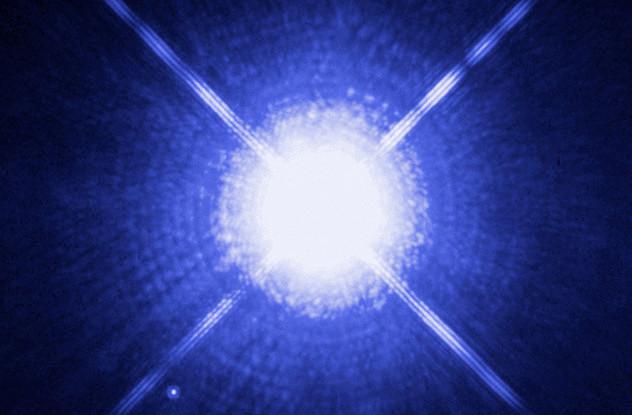
Astronomers are engaged in, among other things, to heavenly archeology: exploring the ruins of the planets after their parent stars die. This allowed us to learn what ominous fate awaits Earth. It all began with a mission: to figure out how the atmosphere of the white dwarf becomes contaminated. The atmosphere of the white dwarf, which should consist of pure hydrogen or pure helium, is often contaminated by heavy elements like carbon, iron and silicon.
Initially, scientists believed that the elements are pushed to the surface of the incredible radiation inside the star. However, with the help of a powerful telescope, astronomers were able to see the fingerprints of elements like carbon, phosphorus, silicon and sulfur in the atmosphere of a white dwarf. Stars with polluted atmosphere showed a higher ratio of sulfur to carbon than typically observed in stars. In fact, the same ratio found in rocky planets.
"The mystery of the composition of these stars is we were trying to solve for more than 20 years, says Professor Martin Barstow from the University of Leicester. — Then we found out that they absorb the remnants of planetary systems, perhaps like our own."
That's such an ominous fate awaits Earth. Through billions of years our planet will be just stony pollution of the dying remnants of the Sun.
What kind of end awaits our galaxy?
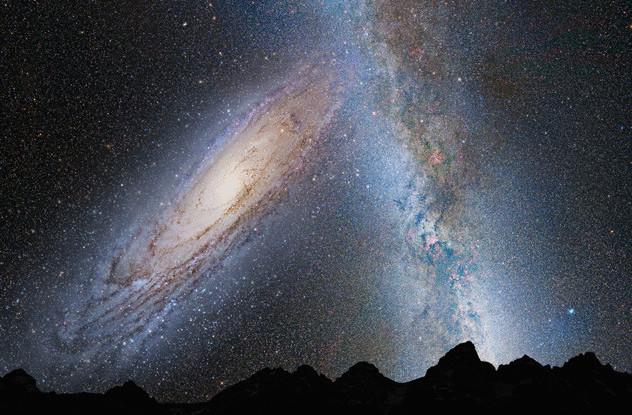
Solving the riddle of development of galaxies, the researchers also develop a deeper understanding of the way and our milky Way galaxy. They learned that the evolution of some galaxies depends on supermassive black holes in the center of a galaxy like our milky Way. These black holes expel almost all the cold gas from nearby galaxies. Without cold gas, these galaxies can't form new stars. Although the outflow of molecular hydrogen gas has become an accepted part of the theory of evolution of galaxies, scientists were puzzled by the fact that this outflow of gas is accelerated.
Using advanced telescopes to study neighboring galaxy IC5063, scientists found that high-energy flow of electrons, emitted by the Central black hole, accelerate the outflow of molecular hydrogen gas. This also indicates that our milky Way galaxy is likely to collide with the Andromeda galaxy in the next five billion years. When two galaxies collide, the gas accumulates in the center of the system and feeds the supermassive black hole. This leads to the formation of electron fluxes and completely makes all the gas in the galaxy. After that, the galaxy can no longer form new stars.
All is illusion?

We think we are learning more and more about our Universe. But scientists from the National accelerator laboratory Fermi working on a project of laser Holometer analysis to check for whether we live, incidentally, in the hologram. This will mean that our three-dimensional world is a mere illusion, and all encoded in a tiny two-dimensional packets. About the same characters on a television show I think we live in a three dimensional world, but trapped in a two-dimensional screen. Scientists believe that information about our Universe can be Packed in packs just as pixels on the TV screen contain data points.
When you stand close to the TV, you can distinguish individual pixels. But when you move on, all the pixels merge into a solid image. Perhaps the world works in a similar way, one "pixel" of space is equal to the area of 10 trillion trillion times smaller than an atom.
"We want to find out whether space-time is a quantum system, like matter, says Craig Hogan of Fermilab. — If anything we will see, it will completely change our understanding of space that has inspired us for thousands of years".
Source: hi-news.ru
Tags
See also
7 biggest unsolved mysteries of science
10 unsolved mysteries of the Solar system
Why to reflect heat back into space
10 main theories to explain why people have dreams
The geometry of four-dimensional time: it is not how the world works how we think
The brain and adolescent behaviour
The word "tepuis"
The truth about the Moai
Space debris can make the space inaccessible to man: infographics
15 amazing mysteries of the cosmos, which are still not allowed to sleep scientist. Incredible!
















